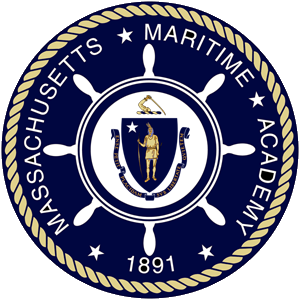MT-3151
Dangerous Liquid Cargo
Course Description
Within this course, the student will learn the characteristics, hazards and safe practices for the handling of petroleum and chemical products. During labs, students practice the actual loading of cargo/ballast aboard the Academy’s 40-foot tank barge. In the lab, using the liquid loading simulator, students practice loading, discharging and tank cleaning. This course satisfies the training requirements necessary for endorsements as tankman-PIC, Tankerman-PIC (barge), Tankerman Assistant, and Tankerman-Engineer. Each student is issued a Tankship/Tankbarge Dangerous Liquid Cargo Certificate upon satisfactory completion of this course. [Lab time required]
This course consists of three 1-hour lectures and one 2-hour lab per week for a semester with a comprehensive final examination.
Learning Objectives
Demonstrate knowledge and understanding of the following STCW elements:
- ABD-C1.3 Pipeline systems – bilge and ballast suctions and wells
- OICNW-B1.3 Ability to establish and maintain effective communications during loading and unloading
- TOPS-X1.1 types of oil and chemical tankers
- TOPS-X1.1 tanker general arrangement and construction
- TOPS-X1.2 cargo piping systems and valves
- TOPS-X1.2 cargo pumps
- TOPS-X1.2 cargo oading and unloading
- TOPS-X1.2 cargo tank cleaning, purging, gas-freeing and inerting
- TOPS-X1.3 oil and chemical pressure and temperature, including vapour pressure/temperature relationship
- TOPS-X1.3 types of electrostatic charge generation
- TOPS-X1.3 chemical symbols
- TOPS-X1.4 Knowledge and understanding of tanker safety culture and safety management
- TOPS-X2.1 operations health hazards (tanker operations)
- TOPS-X2.1 environmental hazards (tanker operations)
- TOPS-X2.1 reactivity hazards (tanker operations)
- TOPS-X2.1 corrosion hazards (tanker operations)
- TOPS-X2.1 explosion and flammability hazards (tanker operations)
- TOPS-X2.1 sources of ignition, including electrostatic hazards (tanker operations)
- TOPS-X2.1 toxicity hazards (tanker operations)
- TOPS-X2.1 vapour leaks and clouds (tanker operations)
- TOPS-X2.2 inerting, water padding, drying agents and monitoring techniques (tanker hazards)
- TOPS-X2.2 anti-static measures (tanker hazards)
- TOPS-X2.2 ventilation (tanker hazards)
- TOPS-X2.2 segregation (tanker hazards)
- TOPS-X2.2 cargo inhibition (tanker hazards)
- TOPS-X2.2 importance of cargo compatibility (tanker hazards)
- TOPS-X2.2 atmospheric control (tanker hazards)
- TOPS-X2.2 gas testing (tanker hazards)
- TOPS-X3.1 Function and proper use of gas-measuring instruments and similar equipment
- TOPS-X3.3 ship/shore safety checklist (tanker safety)
- TOPS-X5.1 Basic knowledge of emergency procedures, including emergency shutdown
- TOPS-X6.1 Basic knowledge of the effects of oil and chemical pollution on human and marine life
- TOPS-X6.2 Basic knowledge of shipboard procedures to prevent pollution
- TOPS-X6.3 report relevant information to the responsible persons (spill response)
- TOPS-X6.3 assist in implementing shipboard spill-containment procedures (spill response)
Topics
Lecture
- Tanker Construction, Purpose and Trade
- Exploration, Refining and Distribution of Oil
- Tank Layout and Piping Systems
- Loading and Discharging Operations
- Planning a Load
- Ballast Operations
- Tank Cleaning Operations
- Inert Gas and Crude Oil Wash Systems
- Marine Vapor Control Systems
- Tanker Fire Safety
- Oil in the Environment
- Duties of the 3rd and Chief Mates
Laboratory
- Simulator Orientation
- Tank Measurements and Gauging
- Tank Vessel Cargo Systems
- Cargo Oil Loading Exercise
- Cargo Oil Discharge Exercise
- Ballast/ De-Ballast Exercise
- IGS / COW Exercise
- Inert Gas / Crude Oil Washing Exercise
- Vapor Emission Recovery Exercise
- Execution of a Loading Plan
Other objectives
The expected learning outcome is that the trainee...
- Explains tanker construction purpose and trade
- Describes the exploration, refining and distribution of oil
- Identifies tank layout and piping Systems
- Demonstrates loading and discharging operations
- Explains planning a load
- Identifies safe ballast operations
- Demonstrates tank cleaning operations
- Describes Inert Gas and Crude Oil Wash Systems
- Relates marine vapor control systems to vessel operations
- Identifies the concepts behind tanker fire safety
- Relates issues of oil in the environment to tanker safety
- Describes the duties of the 3'd and Chief Mates aboard a tank vessel
